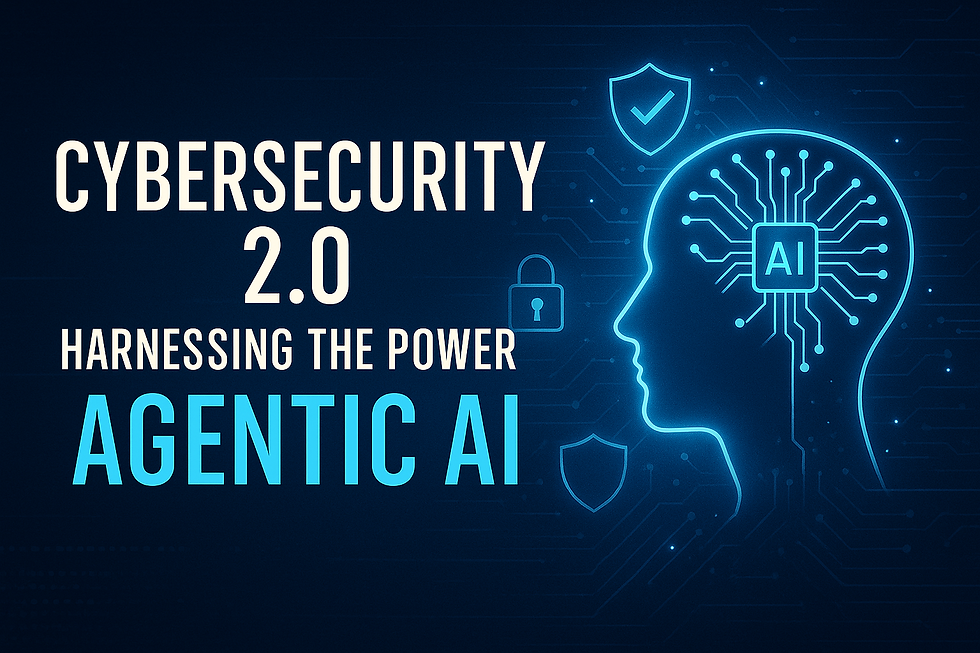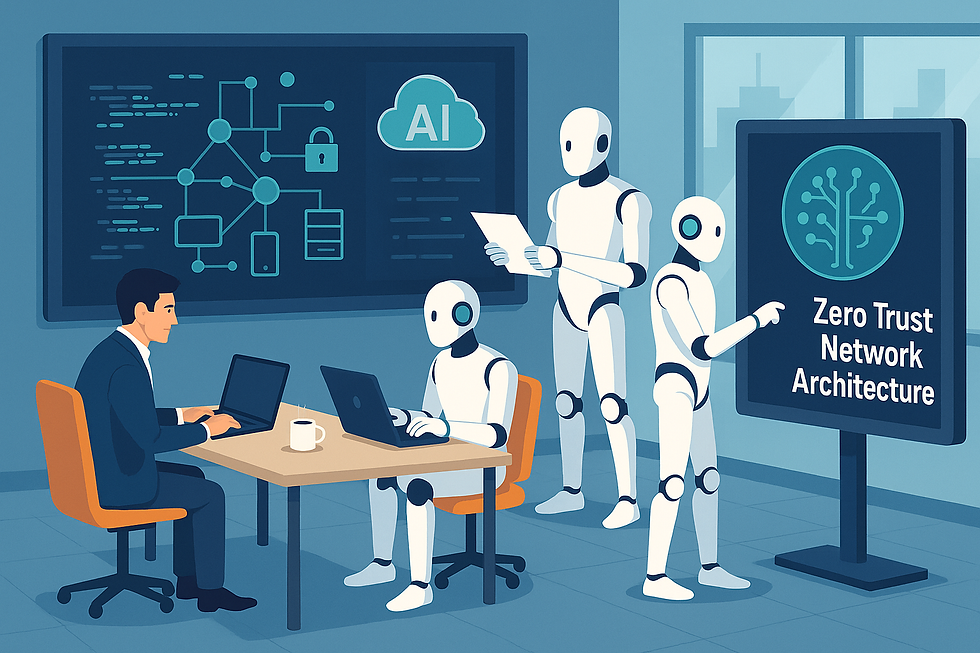Cybersecurity 2.0: Harnessing the Power of Agentic AI
- Heather Pennel

- Aug 5
- 3 min read

A Fast-Moving Technological Shift
Just as businesses are beginning to grasp the cybersecurity implications of generative AI, an even more transformative force is emerging—Agentic AI, the next frontier in cybersecurity. Unlike narrow AI, which excels at specific tasks like facial recognition, or generative AI, which creates text and images, Agentic AI operates with a broader mandate. Agentic AI represents a significant leap forward—introducing fully autonomous systems capable of making decisions, executing complex tasks, and adapting in real time without direct human oversight.
This is the AI of science fiction becoming reality. Think less chatbot and more intelligent, goal-driven assistant—one that can analyze, act, build, and evolve independently. Often referred to as AI “agents,” these systems are designed to sense their environment, process vast amounts of data, and take purposeful actions to achieve objectives. They also continuously improve by learning from prior experiences. Agentic AI is not just enhancing productivity; it is fundamentally reshaping how we operate, design business models, and defend digital environments in the age of modern cybersecurity.
Opportunities and Risks in Equal Measure
Agentic AI holds the potential to revolutionize cybersecurity. It can continuously monitor networks, detect anomalies, respond to threats in real time, and adapt to novel attack methods. Unlike traditional rule-based systems, Agentic AI offers adaptation with agility, speed — critical traits in today’s fast-evolving threat landscape.
This rise of autonomous cyberattacks presents a daunting challenge for security professionals. Defending against such AI-driven threats requires defenses of equal sophistication. Here, agentic AI could become an essential asset for cybersecurity teams, enabling rapid detection, response, and adaptation. Yet, as attackers and defenders alike begin to put autonomous AI technologies in force, the cybersecurity landscape is set to grow increasingly complex at breakneck speed.
Consider the evolving threat landscape where AI-powered malware can autonomously scan networks, pinpoint vulnerabilities, and launch precise attacks—all without human intervention. These malicious agents are capable of modifying their own code to evade detection by antivirus software and firewalls, making them far more difficult to defend against. Additionally, they learn from past attacks, continuously refining their tactics to improve success rates in future attempts.
To illustrate, future AI-driven malware may consist of multiple autonomous agents, each specialized for a task:
Target-Searching Agent: Identifies high-value individuals or systems.
Intelligence Agent: Gathers open-source intelligence to profile targets.
Vulnerability Exploit Agent: Scans for weaknesses and writes exploit code.
Social Engineering Agent: Designs customized phishing or impersonation attacks.
Credential Agent: Validates stolen login details and infiltrates systems.
Smash-and-Grab Agent: Steals or destroys data rapidly before exiting.
These agents could coordinate and adapt in real time, shifting strategies based on the target’s behavior. For example, if a phishing email fails, the system might escalate to a voice-based attack using deepfake audio.
Cybersecurity Adoption: Where We Stand
According to the 2025 Cyber Security Tribe annual report, only 1% of organizations surveyed have fully implemented Agentic AI in their cybersecurity infrastructure. However, 59% classify adoption as a “work in progress,” signaling a major shift on the horizon. The year 2025 is poised to be pivotal as Agentic AI moves toward mainstream cybersecurity strategy.
Defensive Measures: Preparing for the Agentic AI Era
As attackers evolve, so too must defenders. Agentic AI offers powerful tools for protection but also introduces complex risks. Left unchecked, these risks could result in data loss, reputational damage, operational disruption, and ethical nightmares due to the loss of human control and over-reliance
Organizations must act swiftly to mitigate risks and capitalize on Agentic AI’s potential. Recommended steps include:
Training Employees: Educate staff to recognize AI-driven threats such as deepfakes and AI-generated phishing via simulations and awareness programs.
Deploying AI Defensively: Use Agentic systems to detect vulnerabilities, automate patching, simulate attacks, and monitor environments for abnormal behavior.
Strengthening Access Controls: Implement phishing-resistant multi-factor authentication (MFA), track user activity, and build layered defenses to prevent lateral movement.
The Road Ahead
Agentic AI is not some distant future—it’s already taking shape. As this technology becomes more integrated into enterprise systems, organizations must balance the promise of efficiency and innovation with a measured understanding of its implications. Security strategies must evolve, policies adapt, and awareness rise at every organizational level.
We are entering a new era of intelligent, autonomous systems. The question is no longer if Agentic AI will play a role in cybersecurity—but how prepared we are to harness it responsibly.




Comments